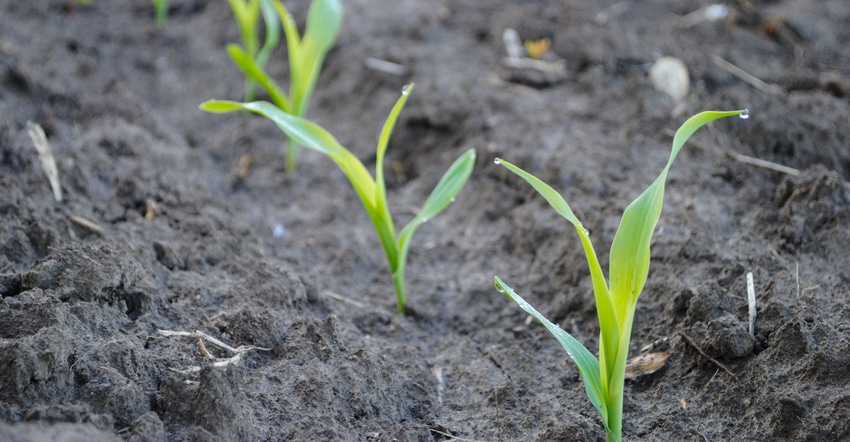
Agriculture has experienced three years in a row of increased income. Jay Rempe, Nebraska Farm Bureau senior economist, calls that trend “remarkable,” especially when you consider that last May and June, the country was in unknown territory in light of COVID-19.
Rempe told a virtual audience attending the 2021 Ag Economic Outlook meeting, sponsored by NEFB, that the ag economy had a huge slowdown at that time, but it has since turned around and made remarkable gains.
“One of the reasons for the turnaround is the level of government assistance that we saw last year due to COVID in the ad hoc programs,” Rempe said. “But the other reason is the price rally that we saw, starting in August last year, particularly in the commodities like corn, soybeans and wheat.”
Feds pitch in
Generally, net farm income from the government hovers between 10% and 20%, and maybe up to 25% in some years, Rempe explained.
“We’ve had a few years, obviously, where it spiked well above that,” he noted. “But you see last year that we’re looking at around 35% of net farm income coming from government payments, with most of it just one-time kind of programs.”
Government payments to producers in Nebraska in 2020 could reach about $2 billion because of COVID-19, Rempe said. “A lot of net income gained last year is a direct result of that,” he said, “so it’s kind of a bit of a false positive.”
Commodity prices are the other aspect to the big income picture. “We’re seeing levels up there that are considerably higher,” Rempe said. “When you look at what history tells us, most farmers in Nebraska will market 43% of their grain in the fall after harvest. If that’s the case last year, you can see the price run up and a lot more revenue coming into farmers’ hands because of that.”
Finances stabilized
In the early days of 2020, there was a feeling that the farm economy was worsening, even before COVID-19. Although there have been small improvements in loan repayment rates in Nebraska over the past year, the repayment rate is still lagging slightly behind other states in the 10th District of the Federal Reserve Bank in Kansas City, Rempe said. Farm bankruptcies were slightly down last year compared to 2019, but still lingered ahead of previous years.
“Land values are appearing anecdotally as stabilized or increasing,” Rempe said. “That kind of helps in terms of the debt capacity for the operation. Overall, I would say financial conditions are better or stabilized compared to where we would have been in 2020 about this time.
“As we entered into 2021, we saw that farm income improved, and we saw the number of farm loans was down. That indicates that farmers and ranchers didn’t have to take on more debt,” Rempe added.
For 2021, Rempe said that COVID-19 had a tremendous effect on agriculture and the country last year, so the pace at which vaccinations for COVID-19 roll out will help determine the overall economic health of the country and agriculture.
“As people feel safe again to go out, that will pick up the economic recovery,” he said. “The overall economy shrank by about 3.6% in 2020, so most economists are expecting it to grow somewhere between 3% to 4%, which is good for agriculture.”
With hotels and restaurants taking big hits during the pandemic, the farm recovery hinges on the recovery of those industries, Rempe added.
“For restaurants and the like, sales were off 19% last year, whereas grocery sales were up 10%,” he said. “We’d lost a bit of demand, but that converted over to the grocery sector.”
Shutdowns in the meat processing industry did their damage to agriculture. “We need to be running at full capacity to keep things moving along,” Rempe said.
Lingering drought
In early 2021, it was widely reported as the first time in eight years that the entire state of Nebraska has been listed under some form of drought.
“The Panhandle and in the southwest are the most critical areas right now,” Rempe noted. “The drought areas are where we have our wheat production, and there is also a lot of corn grown in those areas too, so it could have some impact on that.”
About 58% of Nebraska cropland is dryland, so drought hurts those crops, but irrigators also could see increased costs as well.
“Then you also have to worry about the Sandhills and pastures and forage production, along with cattle herd capacity,” Rempe noted. That dryness creeps up into Iowa, Minnesota, North Dakota and South Dakota.
Be prepared
After the blizzards and floods of 2019 and COVID-19 in 2020, Rempe said that you wouldn’t expect another type of “black swan” or rare occurrence to hit agriculture again.
“But I think, if anything, this has taught us over the last two or three years to be alert and to be wary,” he said. “Make sure you have your operations positioned where, if we have another black swan event, whatever it might be, that you are positioned to manage your way through it as best you can.”
Rempe looks at 2021 as a “stable” year. “I think it’ll be a little better than last year, but maybe not as good as it has been in the past,” he said. “A lot of that is centered around the demand and uncertainties that are out there.
“Exports are going to be a rock star, and they are really going to do well when it is all said and done. But we’re not going to see the level of government assistance. I think net farm income for the state is probably less than last year, just because of both the livestock struggles and the level of government assistance compared to last year.”
Learn more by emailing Rempe at [email protected].
Read more about:
Covid 19About the Author(s)
You May Also Like






